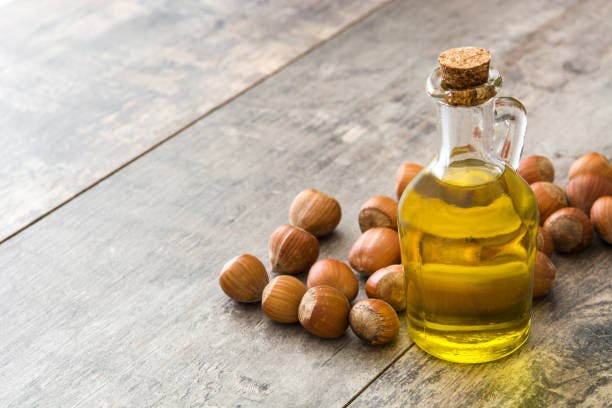Want to lose weight, gain muscle or maintain a healthy weight? Then it pays to keep track of your metabolism. Assessing your metabolic rate is the starting point for designing a proper diet.
What is metabolism?
Metabolism is the name given to all the chemical and energy reactions that take place continuously inside our bodies after we consume food. It is a complex process involving digestion, processing, absorption and distribution of nutrients to the cells. So, by “metabolism” we can think of everything that goes on inside the body to make the body function as it should.
In the context of nutrition, we more often encounter the term “basal metabolism”. Basal metabolic rate (BMR) is the minimum amount of calories that our body needs to provide basic life functions. These functions include:
- Blood circulation
- Respiration
- cell renewal
- digestion of food
- nutrient absorption
- body temperature regulation
- control of hormone levels
- Protein synthesis
- transport of substances
Metabolism works around the clock and never stops, even when our body is at rest. We all need energy for breathing, heart function, communication with the nervous system, digestion, hormonal function and more. So even when the body is completely still or asleep, it is burning energy.
Basal metabolism accounts for about 60% to 75% of total calories burned per day. Thus, it contributes significantly to our energy expenditure. The value of basal metabolism is highly individual and varies from person to person. This is also why each of us burns differently – some people have a faster metabolism and others have a slower one.
Metabolism is influenced by a number of factors:
- Gender: Men usually have a faster metabolism than women (5-7% on average), because they have more muscle mass and less body fat.
- Amount of muscle mass: It takes more energy (calories) to build and maintain muscle than it does to maintain body fat. Therefore, people with more muscle mass tend to have a faster metabolism and burn more calories even at rest.
- Age: Metabolism slows down with age due to loss of muscle tissue, but also due to hormonal and neurological changes.
- Height: Larger body size means more metabolizing tissue, and thus more basal metabolism. However, this is not always the rule.
- Dieting history: crash diets, uncontrolled starvation or “detoxes” can all negatively affect our metabolism. When we eat too few calories, our body reduces its energy expenditure through a drop in metabolism to conserve energy for basic bodily functions. If muscle mass is lost at the same time, basal metabolism is further reduced.
- Growth period: infants and children have higher energy requirements per unit of body weight due to increased energy requirements for growth.
- Genetics.
- Environmental temperature: Basal metabolism is also affected by ambient temperature. If the temperature is very low or too high, the body tries to maintain a constant body temperature and metabolism increases.
- Infection or disease: Metabolism increases during illness due to fighting infection and activating the immune system.
- Thyroid function: when thyroid function is increased (hyperthyroidism), the metabolic rate increases, while when thyroid function is decreased (hypothyroidism), the metabolic rate decreases.
Basal metabolism x resting metabolic rate
Some people mistakenly confuse the terms basal metabolic rate (BMR) and resting metabolic rate (RMR). These two terms are very similar, yet different.
Basal metabolism is the amount of calories needed to carry out the most basic (basal) functions of our body, such as respiration, circulation, and cellular remodeling. Basal metabolism is most accurately measured in a laboratory setting under very strict conditions (fasting, resting, and in a thermally neutral environment.
Resting metabolic rate is the amount of calories our body burns at rest. The assessment of resting metabolism is not as rigorous as that of basal metabolism. It is measured at least 2 hours after the last meal in complete physical and mental rest. Resting metabolic rate values are about 10% higher than BMR values.
It pays to know your metabolism
Basal metabolic rate is a useful tool in assessing individual energy expenditure. Whether we want to lose weight, shape our body, gain muscle or maintain our weight, we should have at least a general idea of our basal metabolic rate. We can then better determine our ideal calorie intake for a given goal.
Total energy expenditure is made up of several components:
If we know how many calories we burn, we will know how much to consume. Simply put:
- Is our goal to maintain our weight? We need to eat as many calories as we burn in a day.
- Is our goal to gain weight in a good way? We should eat 10% to 15% more calories than we burn in a day.
- Is our goal to lose weight? We should consume 20% fewer calories than we burn in a day.
Calculating basal metabolic rate
We can measure basal and resting metabolism in the laboratory or we can estimate these values using predictive equations. The following equations are most commonly used to roughly estimate basal and resting metabolism:
1. Harris-Benedict equation
The Harris-Benedict equation is one of the best known and oldest equations for calculating basal metabolism. However, the accuracy of the calculation can be biased by the fact that it does not take into account the body composition (the amount of muscle and fat in the body) of a person.
| Women | BMR (kcal) = 655.1 + (9.563 × weight in kg) + (1.85 × height in cm) – (4.676 × age) |
| Men | BMR (kcal) = 66.47 + (13.75 × weight in kg) + (5.003 × height in cm) – (6.755 × age) |
2. Mifflin-St Jeor equation
The Mifflin-St Jeor equation was developed in the 1990s and provides a more up-to-date and accurate estimate of basal metabolism. However, it is still based on body weight alone, without regard to the amount of muscle mass of a given person. This calculation is especially useful for those who do not know their body fat percentage.
| Women | BMR (kcal) = (10 × weight in kg) + (6.25 × height in cm) – (5 × age) – 161 |
| Men | BMR (kcal) = (10 × weight in kg) + (6.25 × height in cm) – (5 × age) + 5 |
3. Katch-McArdle equation
This equation is considered one of the most accurate. It is based on active body mass (fat-free tissue) and takes into account the metabolic activity of muscle mass. Therefore, to calculate it, it is necessary to know the amount of fat-free tissue (active body mass), for example, by measuring it on the InBody.
| Women and men | BMR (kcal) = 370 + (21.6 × FFM) |
| FFM = amount of fat-free tissue |
Metabolic diagnostics
The most accurate way of assessing metabolism is provided by expert testing in the laboratory. These metabolic tests most often work on the principle of direct or indirect calorimetry.
- Direct calorimetry measures the amount of heat produced by a person enclosed in a small chamber, from which energy expenditure is calculated.
- Indirect calorimetry is based on energy expenditure during respiration, specifically the difference between inhaled oxygen and exhaled carbon dioxide.
Although metabolic diagnostics in the laboratory are among the most accurate methods, these metabolic tests are expensive, time consuming, and often difficult to obtain. As a result, more affordable techniques that measure basal metabolism with varying degrees of accuracy have been developed over the past several decades.
In addition to the previously mentioned mathematical formulas, an increasingly popular method today is the so-called bioelectrical impedance, which is also used by devices such as InBody or Tanita.
Bioelectrical impedance works on the basis of the different resistance (impedance) of the body’s tissues to the passing electric current sent by the diagnostic device into the body.
Based on the differing tissue resistance, body composition is then assessed and basal metabolism can be more accurately calculated.
Slowed metabolism: what does it mean and what is to blame?
A slow metabolism means that our body gives off (burns) less energy than it should on average. Some lucky individuals have a naturally fast metabolism, while others struggle with a slow metabolism. Either way, a slow metabolism can hinder our attempts at the perfect physique, often without us knowing it.
Having a fast metabolism is an advantage in every way these days and can prevent the body from storing excess fat. People with a fast metabolism burn more calories even when they are at rest.
Thus, individuals with a fast metabolism can seemingly eat whatever they want and not gain weight, while those with a slow metabolism must work much harder to lose or maintain their weight. If you are in the latter group of people, read on.
The main causes of slow metabolism:
- starvation, constant dieting and low calorie intake
- Unbalanced diet (low protein intake in the diet, excess processed foods)
- lack of exercise
- Age
- long-term sleep deprivation
- certain diseases (reduced thyroid function, Cushing’s syndrome)

How do I know I have a slow metabolism?
Also, do you know someone who can eat whatever they want and you gain weight almost just by looking at a piece of roll? That may be the first sign that you have a “lazy” metabolism. There are several ways and warning signs to recognize a slow metabolism:
- You are gaining weight for no apparent reason
- you eat healthy and exercise, but the weight doesn’t budge
- You follow one diet after another, but the effect is nowhere
- you’re plagued by constant fatigue
- you have problems with your skin, hair and nails
- you suffer from frequent headaches
- you feel weak for a long time
6 simple tips to speed up your metabolism
As we already know, many factors affect your metabolic rate. Genetic factors, age, gender and body composition all play a role. There is not much we can do about genetics, age and gender, but we can change the ratio of our body composition – the amount of fat and muscle in our body to increase our metabolism. How to do it?
1. Forget drastic diets
The most common weight loss mistake is extremely low calorie intake. The very biggest sin is when we set our calorie intake below our basal metabolic rate. If we drastically reduce our calorie intake, the body recognizes this as a threat and begins to reduce its energy expenditure – it begins to conserve energy for basic life functions. The consequence of extreme diets is therefore a slower metabolism and a range of health consequences.
2. Focus on a healthy diet
Base your diet on natural, minimally processed foods. Such foods include:
- Vegetables
- fruit
- lean meat
- fish
- whole grain cereals
- Legumes
- unsweetened dairy products
- potatoes and sweet potatoes
- eggs
- nuts and seeds
- avocados
- high quality oils (olive, linseed, avocado)

3. Make sure you get enough protein
Protein has the greatest thermic effect of food (TEF). This means that the body uses more energy in digesting and absorbing protein than it does for carbohydrates and fats. Approximately 20-30% of the energy is spent processing protein, compared to 5-10% for carbohydrates and 0-3% for fats. In addition, protein provides a feeling of satiety and thus helps with weight loss.
Focus on having a source of protein in every meal:
- Lean meats – chicken and turkey breast, beef lean back meat, pork loin and leg, venison, rabbit
- fish – salmon, trout, tuna, cod, pikeperch, bream, mackerel, sardines
- seafood
- Dairy products and cheese – white yoghurt up to 3% fat, semi- and low-fat cottage cheese, white kefir, hard cheeses up to 30% fat, Mozzarella, tvarůžky, ripened cheeses with lower fat content, gervé, ricotta
- eggs
- high percentage ham – chicken and turkey ham over 90% meat, pork ham over 90% meat
- Legumes – beans, chickpeas, lentils, peas
- unfermented soy products – tempeh, natto, miso
4. Engage in strength training
Having more muscle in your body definitely pays off. Don’t you believe it? Then read on. Through strength training (weight training) we build muscle, which is more metabolically active than fat. This means that muscle burns more energy at rest than body fat.
Thus, a person with more muscle mass will have a higher resting metabolic rate than a person who has less muscle. Moreover, strength training alone increases resting metabolic rate by 5-10% approximately 24-48 hours after the activity has ceased. We are therefore burning calories long after we are already resting. Isn’t that great?
Incorporate strength training into your weekly regimen 2-3 times a week, targeting your major muscle groups (legs, glutes, back, shoulders, chest, abdominals and arms). Ideally, choose multi-joint exercises (squats, shoulder presses, lunges, deadlifts, kettlebell swings, push-ups, etc.) and don’t be afraid to play around with intensity and load.
5. Move during the day
All normal daily activities count. Although we do them spontaneously, they have a big impact on weight loss and metabolic rate. So instead of taking the elevator, take the stairs, stretch regularly at work or get off the bus one stop early and walk.
6. Drink more water
Drinking the right amount of water is absolutely essential for a properly functioning metabolism. The basis of the drinking regime should be water. According to expert recommendations, it is advisable to drink 35-40 ml of water per day per kilogram of body weight.
Summary: What’s good to know about metabolism
Whether you need to gain weight, maintain your current weight, or lose weight, an overview of your basal metabolic rate is a good start. However, keep a few points in mind:
- Everyone’s basal metabolic rate is individual – it is affected by height, age, weight, amount of muscle in the body, gender and health.
- Several methods can be used to assess metabolism – the gold standard is measurement on the InBody device, which takes body composition (muscle × fat) into account.
- Never eat fewer calories than your basal metabolic rate – adverse health effects and slowing of metabolism due to saving energy “for a rainy day” can result.
- If you have a slow metabolism, there is always something you can do about it – a healthy diet that respects individual energy requirements and regular exercise are the basics.
Resources
- 1. Blundell, J. E., Caudwell, P., Gibbons, C., Hopkins, M., Naslund, E., King, N., & Finlayson, G. (2012). Role of resting metabolic rate and energy expenditure in hunger and appetite control: a new formulation. Disease Models & Mechanisms, 5(5), 608-613.
- 2. Osterberg, K. L. & Melby, C. L. (2000) Effect of acute resistance exercise on postexercise oxygen consumption and resting metabolic rate in young women. International Journal of Sport Nutrition and Exercise Metabolism. 10 (1), 71-81.
- 3. Frankenfield, D., Roth-Yousey, L., & Compher, C. (2005). Comparison of predictive equations for resting metabolic rate in healthy nonobese and obese adults: a systematic review. Journal of the American Dietetic Association, 105(5), 775-789.
- 4. Aristizabal, J. C., Freidenreich, D. J., Volk, B. M., Kupchak, B. R., Saenz, C., Maresh, C. M., Kraemer, W. J., & Volek, J. S. (2015). Effect of resistance training on resting metabolic rate and its estimation by a dual-energy X-ray absorptiometry metabolic map. European Journal of Clinical Nutrition, 69(7), 831-836.
- 5. McArdle, W., Katch, F. I., & Katch, V. I. (1996). exercise physiology (3rd ed.). Baltimore, United States: Williams and Wilkins.
Read also:
- How do I check my gastrointestinal function?Stomach pain, constipation or diarrhea, bloating, belching, heartburn? These are all symptoms of problems in the gastrointestinal tract. It starts with the mouth and esophagus and ends with the intestines and rectum.
- What are the benefits of hazelnut oil for the skin?Hazelnut oil is rich in vitamins and essential fatty acids that nourish the skin. Here are a few reasons why you should add this oil to your skin care routine.
- Immune-boosting aromatic oilsThere are many products and treatments that can help your body to build a natural resistance to the harsh winter months, and aromatherapy is one of them. There are many studies supporting the healing power of aromatherapy and it is good for both mental and physical health. Aromatic essential oils also have many health benefits… Read more: Immune-boosting aromatic oils
- Marula Oil Benefits, Uses, and PrecautionsMarula Oil is an exotic oil that comes from the African Marula tree. It’s a good ingredient for skin, hair, and nails. Learn more about the benefits and precautions of Marula Oil with our guide.
- Goal setting for students, children and young peopleRemember when you learned how to set goals? If you have trouble answering this question, you are not alone! Most of us don’t spend much time thinking about how we set our goals. In fact, many of us don’t even think of goal setting as a skill; rather, it’s something we do without much thought.… Read more: Goal setting for students, children and young people
The articles on this site are for information purposes only. The site administrators are not responsible for attempting to apply any recipe, advice or diet, nor do they guarantee that the information provided will help or harm you personally. Be cautious and always consult a doctor or nutritionist!
*All products recommended are selected by our editorial team. Some of our articles include affiliate links. If you buy something through one of these links, you help us earn a small commission from the seller and thus support the writing of useful and quality articles.










